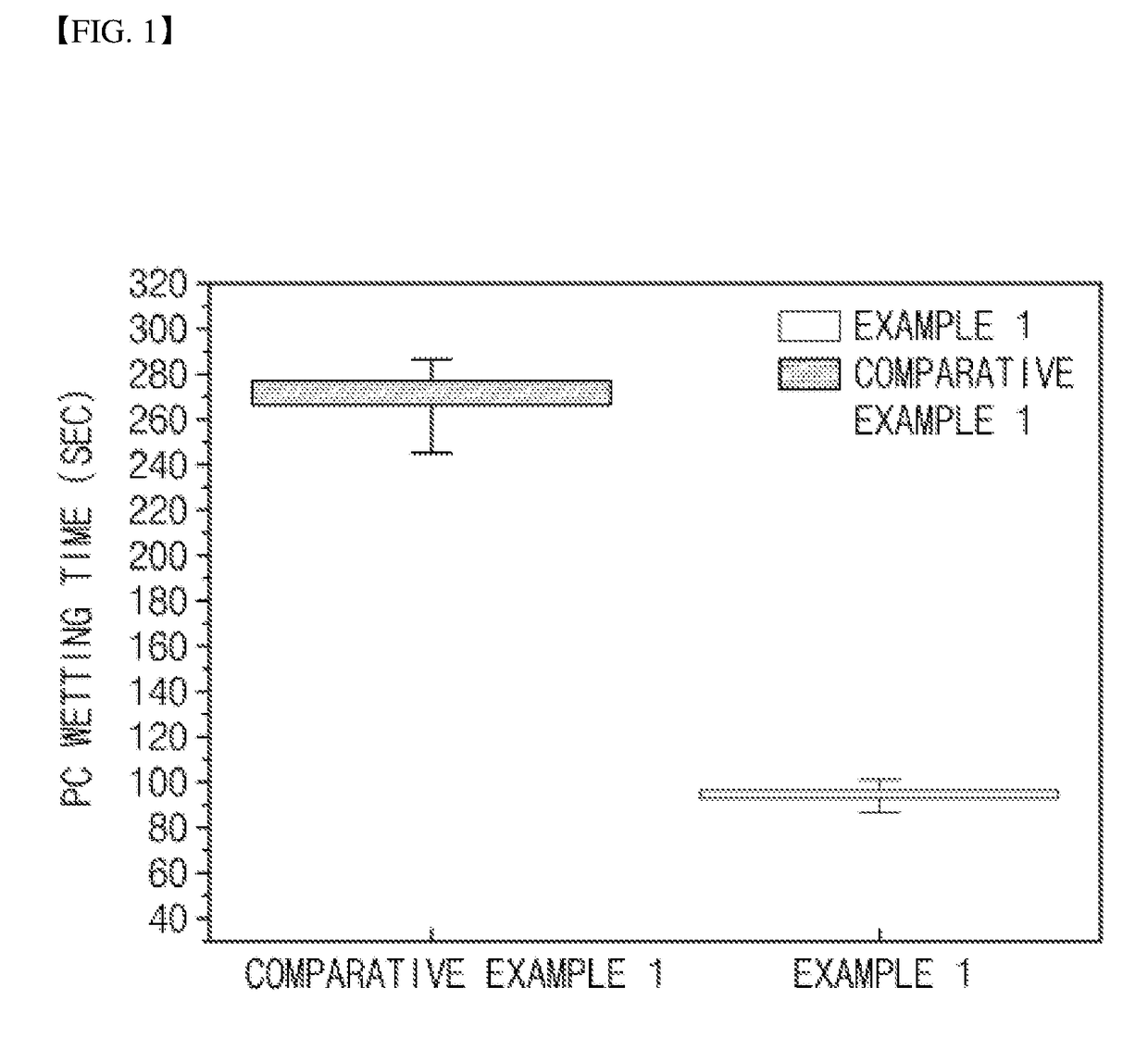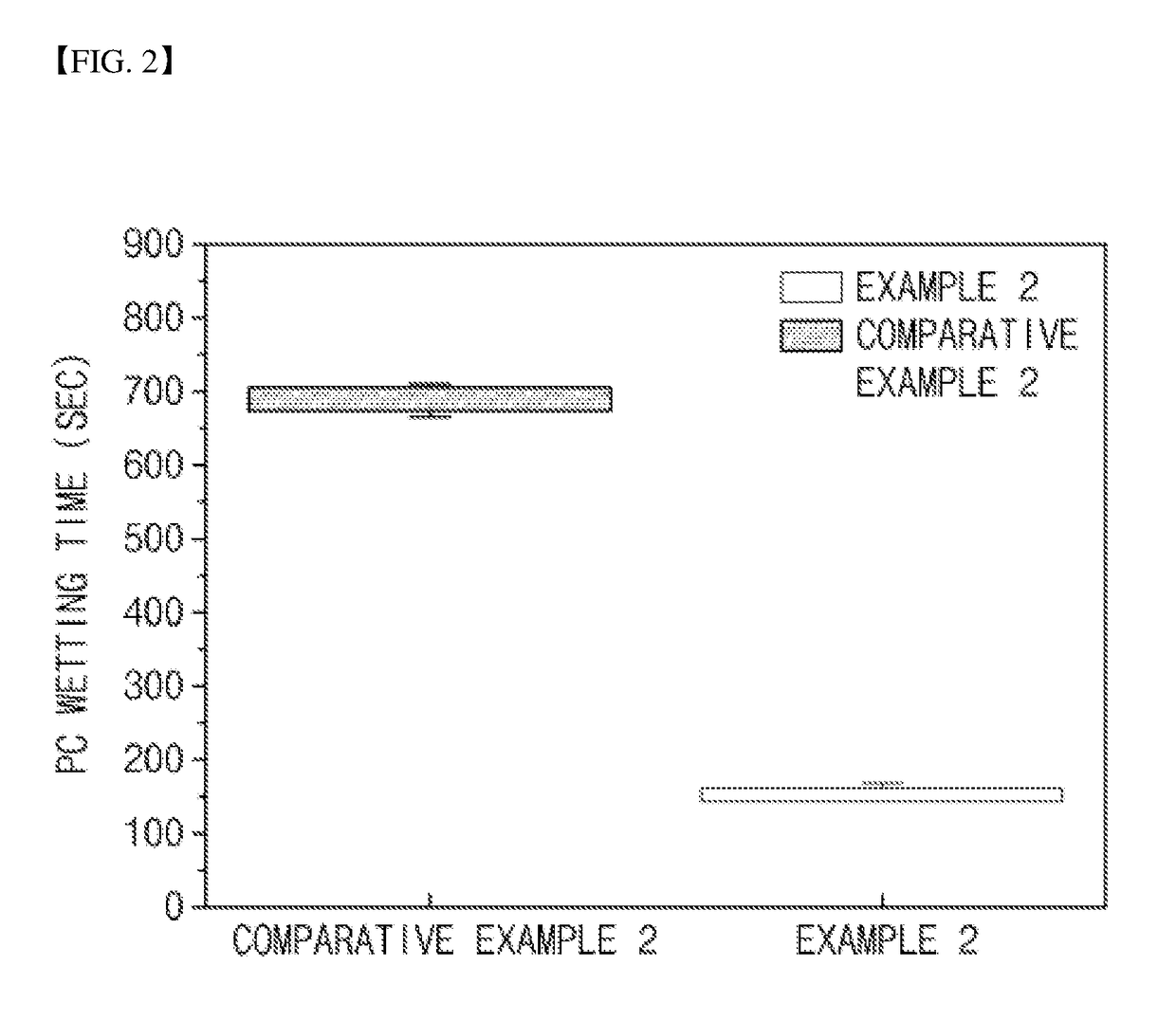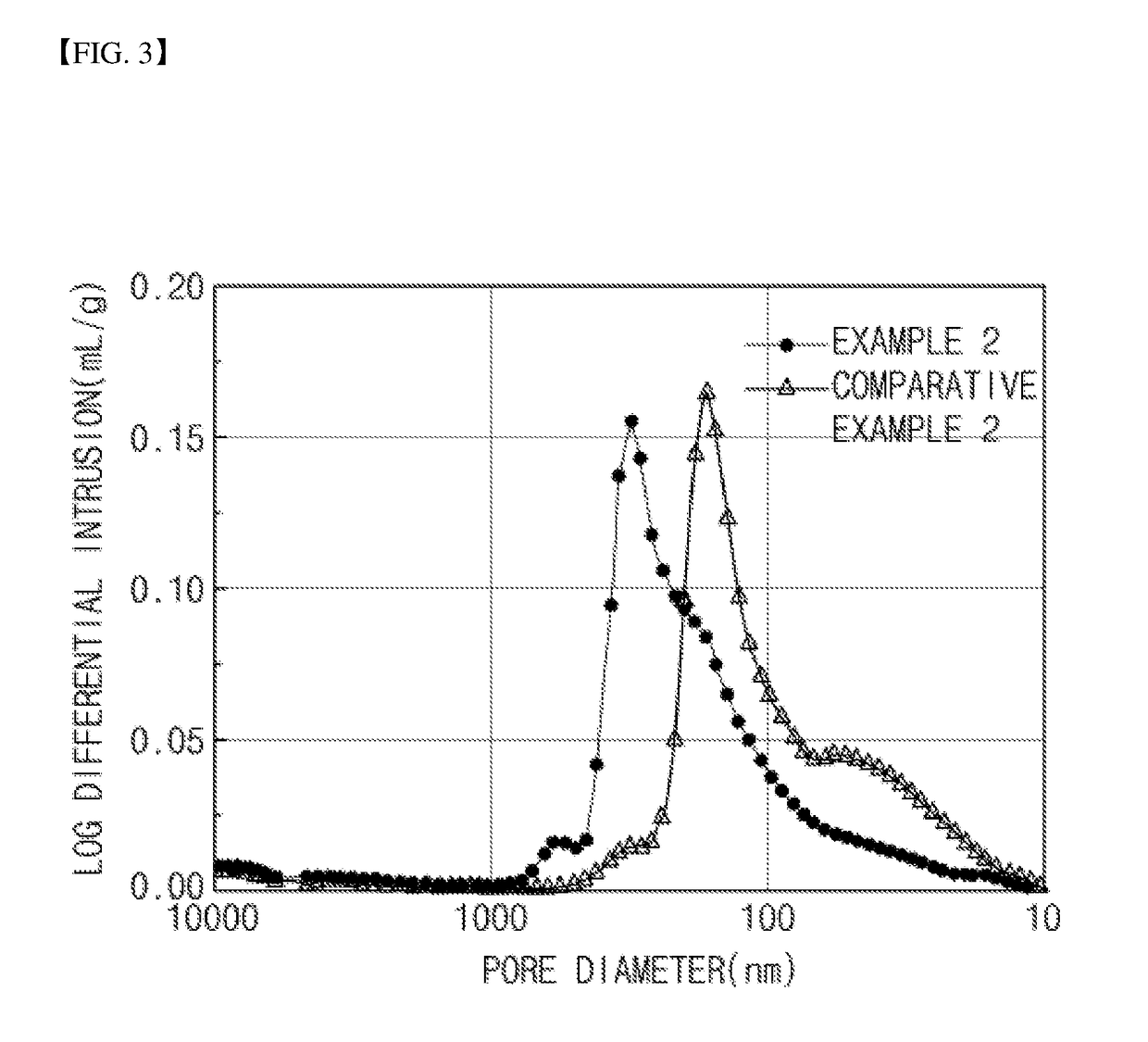Positive electrode for secondary battery and secondary battery including the same
a technology of secondary batteries and positive electrodes, which is applied in the direction of batteries, cell components, electrochemical generators, etc., can solve the problems of increasing increasing the number of carbon nanotubes, and limited use of carbon nanotubes, etc., to improve the wetting time of the positive electrode, improve the pore structure, and improve the wetting properties of the positive electrod
- Summary
- Abstract
- Description
- Claims
- Application Information
AI Technical Summary
Benefits of technology
Problems solved by technology
Method used
Image
Examples
example 2
[0146]A positive electrode was fabricated in the same manner as in Example 1, except that a mixture of LiNi0.6Mn0.2Co0.2O2 (a mixing weight ratio=7:3) having different particle sizes of D50=5 μm and D50=11 μm was used as the positive electrode active material, the mixing weight ratio of positive electrode active material: carbon nanotubes: binder was changed to 97.8:0.8:1.4, and the roll-pressing process was performed under the following condition: a target packing density of 3.194 g / cc. The packing density of a positive electrode active material layer in the fabricated positive electrode was 3.1 g / cc.
example 3
[0147]A positive electrode was fabricated in the same manner as in Example 1, except that LiCoO2 (XD20A™, manufactured by Yumi Core Corporation, D50=16.5 μm, bimodal particle size distribution) was used as the positive electrode active material, the mixing weight ratio of positive electrode active material: carbon nanotubes: binder was changed to 97.8:0.3:0.9, and the roll-pressing process was performed under the following condition: a target packing density of 4.1 g / cc. The packing density of a positive electrode active material layer in the fabricated positive electrode was 4.1 g / cc.
experimental example 1
[0151]A shape of a secondary structure, an average diameter of units, crystallinity, purity, and BET specific surface area of the carbon nanotubes (CNTs) used in Example 1 and the CNTs used in Comparative Example 3 were measured using the following methods, and the results thereof are shown Table 1 below.
[0152]1) Shape and particle size of secondary structure of CNTs: Particle size of carbon nanotubes and a shape of a secondary structure thereof were observed using a scanning electron microscope (SEM).
[0153]2) Average diameter of CNT units: measured using an SEM and the BET method
[0154]3) Crystallinity (a ratio of ID / IG): An average value and standard deviation of a ratio (ID / IG) of the intensity (ID) of a maximum peak of a D band at 1340 nm to1360 nm to the intensity (IG) of a maximum peak of a G band at 1575 nm to 1600 nm, the ID and the IG being obtained by Raman spectroscopy using a laser having a wavelength of 514.5 nm were calculated.
[0155]4) Purity: The purity of the carbon n...
PUM
| Property | Measurement | Unit |
|---|---|---|
| diameter | aaaaa | aaaaa |
| pore size distribution | aaaaa | aaaaa |
| packing density | aaaaa | aaaaa |
Abstract
Description
Claims
Application Information
 Login to View More
Login to View More - R&D
- Intellectual Property
- Life Sciences
- Materials
- Tech Scout
- Unparalleled Data Quality
- Higher Quality Content
- 60% Fewer Hallucinations
Browse by: Latest US Patents, China's latest patents, Technical Efficacy Thesaurus, Application Domain, Technology Topic, Popular Technical Reports.
© 2025 PatSnap. All rights reserved.Legal|Privacy policy|Modern Slavery Act Transparency Statement|Sitemap|About US| Contact US: help@patsnap.com



